Protecting your property from all the natural hazards that exist in the world requires a multifaceted approach. One of the most crucial safeguards you can provide your home and yard is a proper drainage system. Drainage systems prevent damage to your home’s foundation by redirecting excess rainwater, and they help prevent standing water and puddles in your yard, which means fewer issues like pests, disease, and weeds.
Drainage systems are important for the health and safety of properties everywhere, but the Portland area is one of the rainiest metropolitan areas in the country, making proper drainage a necessity. That’s why the team here at Simple Lawns & Landscape Design has put together this list of the best types of drainage systems for your home. Join us as we go over the benefits of some of the most popular drains, and be sure to check out our irrigation and landscape design services to improve the drainage of your home in the Portland area!
Surface Drains
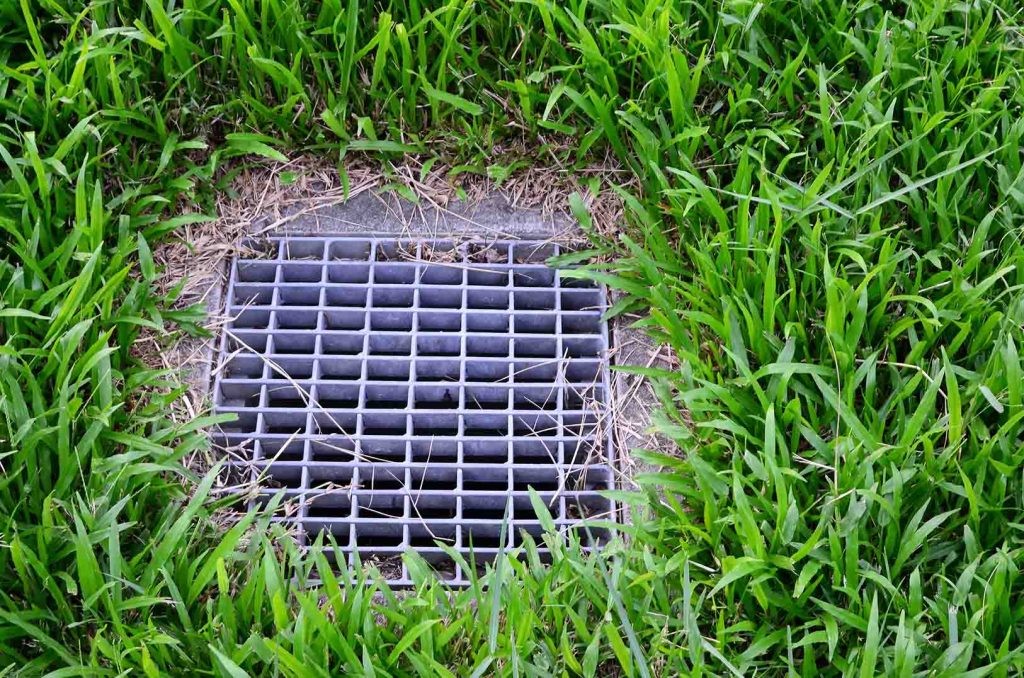
A surface drainage system is a practical and effective method for managing excess water on your property's surface. This system is constructed by creating shallow channels or basins, usually covered with grates or perforated lids, to collect and direct water away from problem areas. Surface drains are particularly useful for addressing issues like standing water, surface runoff, or water pooling, which can lead to erosion and damage in your yard. Surface drains are the most common and widely used types of drains for residential areas, and there are many different types of systems that could be considered surface drains.
Benefits Of Surface Drain Systems
- Efficient Water Removal: Surface drains are designed to swiftly collect and redirect surface water. They prevent water from pooling in low-lying areas, which can cause soil erosion, damage to landscaping, and hinder outdoor activities.
- Aesthetic Options: Surface drains come in a variety of designs and materials, making it easy to choose one that complements your landscaping and blends seamlessly into your yard's overall design. They can even be integrated into garden paths or decorative rock gardens.
- Easy Installation & Maintenance: Surface drains are relatively easy to install, making them a cost-effective solution for managing excess water. Their simple design also results in minimal maintenance requirements. Regular cleaning and occasional inspection are typically all that's needed to keep them functioning efficiently.
- Foundation Protection: By preventing surface water from collecting around the foundation of your home, surface drains also help safeguard your property from water-related foundation damage. This protection can save you from costly repairs down the road.
Traditional Trench Drains
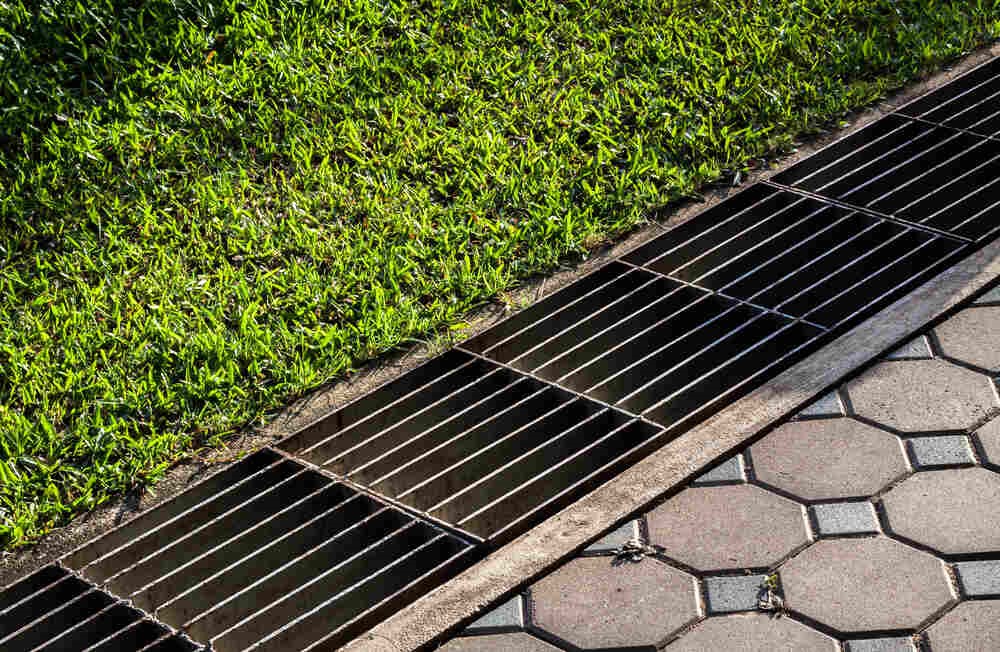
A traditional trench drainage system, also known as a linear drain or channel drain, is a widely used and highly effective method for managing surface water and preventing water-related issues. These systems consist of a long, narrow trench or channel, typically constructed from materials like concrete or polymer concrete. The trench is equipped with a removable grate or cover that sits at or slightly below ground level to collect and redirect surface water efficiently. Traditional trench drainage systems are commonly installed in various settings, such as industrial facilities, commercial spaces, residential driveways, and patios. Trench drains are a popular type of surface drain.
Benefits Of Trench Drain Systems
- Effective Surface Water Management: Trench drains excel at collecting and channeling surface water. Their long and linear design allows them to efficiently handle large volumes of water, preventing flooding, erosion, and property damage.
- Aesthetic Versatility: Trench drains can be seamlessly integrated into the landscape, ensuring they don't disrupt the visual appeal of your property. They come in various designs and materials, allowing you to choose one that complements the aesthetics of your space.
- Versatility and Adaptability: These drainage systems are versatile and suitable for both residential and commercial applications. They are especially useful in high-traffic areas where water management is critical for safety and property preservation.
- Low Maintenance: Maintenance primarily involves periodic cleaning of the grates to remove debris. This makes traditional trench drainage systems a practical and low-maintenance solution for effective surface water management.
French Drains
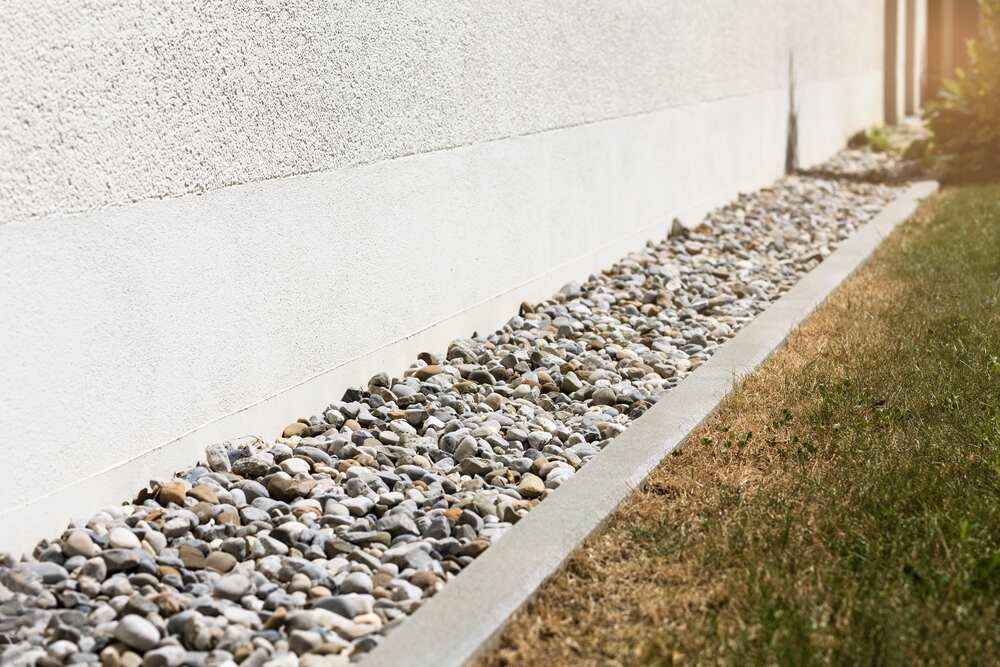
A French drain is a highly effective and versatile drainage system that offers a robust solution to managing excess water in your yard. The construction of a French drain involves a relatively simple yet effective process. It typically consists of a trench that is dug into the ground and filled with gravel or rock, which acts as a conduit for water. This installation method also enhances the natural aesthetics of your yard due to the lack of visible grates. A perforated pipe, often covered with a fabric sock to prevent clogs, is then placed at the bottom of the trench. This pipe serves to collect water from the surrounding soil and transport it away from the problem area, ensuring that your yard remains free from standing water.
Benefits Of French Drain Systems
- Versatility: One of the primary advantages of French drains is their versatility. They can be used in a wide range of yard settings, from residential gardens to large commercial landscapes. Whether you need to address surface runoff, waterlogged areas, or simply want to prevent standing water, a French drain can be tailored to your specific needs.
- Effective Water Management: French drains are incredibly efficient at diverting water away from areas where it can cause damage. They prevent soil erosion, protect the foundation of your home, and maintain the integrity of your landscaping by maintaining proper soil moisture levels.
- Low Maintenance: Once installed, French drains typically require minimal maintenance. The gravel or rock in the trench acts as a natural filter, preventing debris from entering the drainage pipe and clogging it. This results in a long-lasting solution that requires little ongoing care.
- Aesthetic Appeal: French drains can be designed to blend seamlessly with your landscaping. They can be hidden beneath decorative rocks, mulch, or even integrated into garden paths, ensuring they do not detract from the overall look of your yard.
Dry Wells

A dry well drainage system is a subsurface structure designed to manage excess water by allowing it to percolate into the ground. This system is constructed by digging a hole or excavating a cylindrical or box-like chamber in the ground and filling it with gravel, stone, or other porous materials. The primary purpose of a dry well is to collect and disperse water from sources such as roof runoff, surface drainage, or sump pump discharge, preventing waterlogging and potential flooding in your yard.
Benefits Of Dry Well Systems
- Effective Flood Control: Dry wells are highly effective at managing large volumes of water, making them an excellent choice for areas prone to heavy rainfall or poor drainage. By providing a controlled outlet for water, they prevent surface flooding and the associated damage to your property.
- Yard Preservation: Dry wells help maintain the health and aesthetics of your yard by preventing standing water. This is particularly important for the longevity of your lawn and landscaping, as it avoids waterlogged soil, which can lead to root rot and erosion issues.
- Low Environmental Impact: Dry wells are environmentally friendly. They promote groundwater recharge by allowing water to percolate into the soil, replenishing local aquifers and helping to maintain the natural water cycle. This reduces the burden on municipal stormwater systems and minimizes the risk of pollution from runoff.
- Space Efficiency: Dry wells are a space-efficient drainage solution. They can be installed underground, freeing up surface space for landscaping, driveways, or recreational areas, which is especially advantageous for properties with limited space.
Bioswales
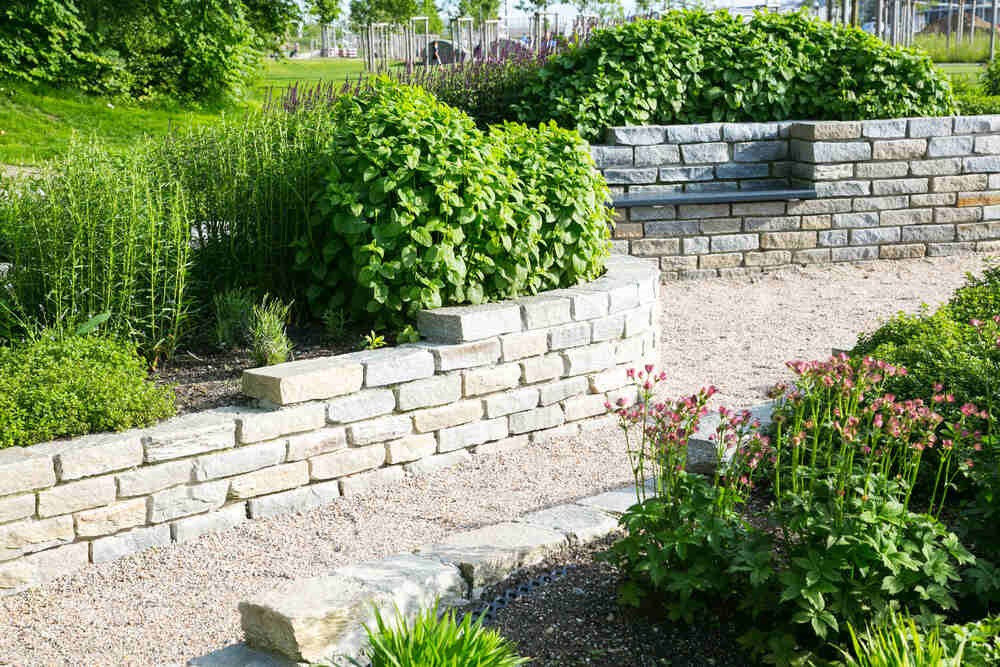
Swales are shallow, gently sloping channels or depressions designed to manage water flow on your property effectively. These landscape features are constructed by excavating a trench or depression, often following the natural contour of the land, and lining it with vegetation, rocks, or other suitable materials. When swales are hidden and blended with natural elements, they are often referred to as bioswales. Bioswales are an environmentally friendly and aesthetically pleasing way to control surface runoff and prevent erosion in your yard. Be sure to check out our for more information!
Benefits Of Swale Systems
- Natural Appearance: One of the primary advantages of swales is their ability to blend with the natural landscape. They can be landscaped with native plants, shrubs, and rocks, giving your yard an organic and visually appealing touch. Swales look like natural features rather than man-made structures.
- Erosion Control: Swales are highly effective in preventing soil erosion. By slowing down and spreading out the flow of water, they allow sediment to settle, reducing the risk of soil loss due to heavy rains or runoff. This, in turn, helps maintain the integrity of your landscaping and prevents soil from being washed away.
- Biodiversity: Swales can contribute to the ecological value of your yard by supporting local flora and fauna. Native plants within the swales can attract wildlife and promote biodiversity, enhancing the overall environmental health of your property.
- Low Maintenance: Swales are relatively low-maintenance once established. Native plants tend to require less water and upkeep, making them a sustainable and eco-friendly choice. Periodic inspection and maintenance may be needed, but these tasks are typically minimal compared to other drainage systems.
Catch Basins
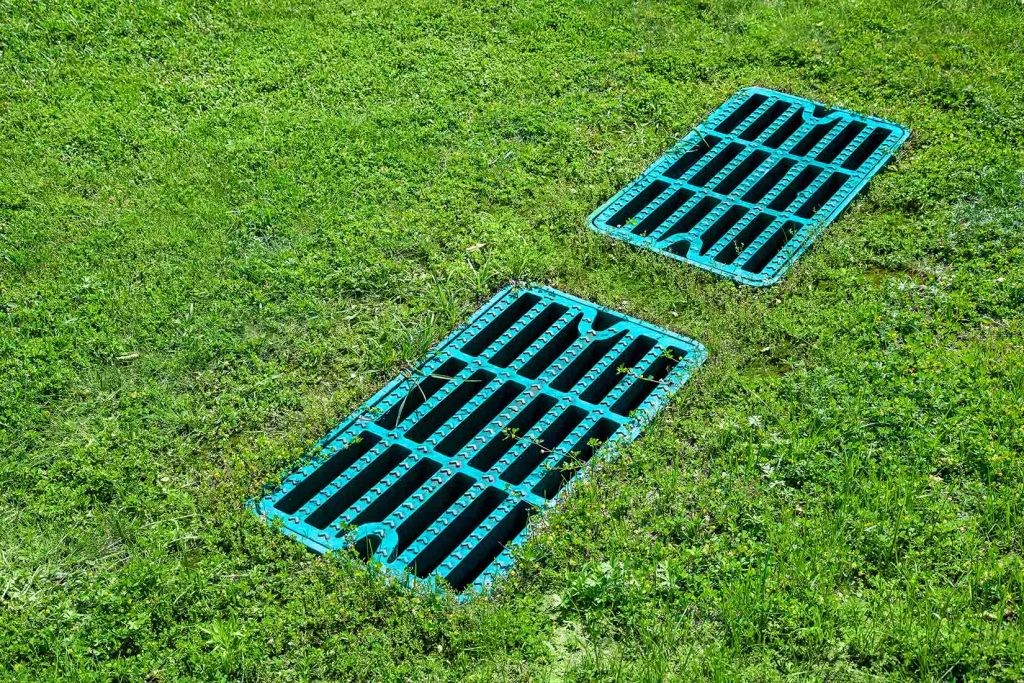
A catch basin drainage system, also known simply as a “yard drain,” is a key component of many modern stormwater management systems. These basins are designed to collect and manage rainwater runoff efficiently. The construction of a catch basin involves a large, typically underground structure with a grate or curb inlet on the surface to capture surface water and direct it into the basin below. The collected water is then typically channeled into a drainage pipe system, allowing it to be redirected away from the area to prevent flooding and soil erosion.
Benefits Of Catch Basin Systems
- Efficient Water Collection: Catch basins are highly effective at capturing surface runoff, preventing water from pooling in low-lying areas and causing damage. Their large capacity allows them to handle significant volumes of water.
- Prevention Of Flooding: By swiftly collecting rainwater, catch basins help prevent flooding and protect your property from water damage. This is especially important in areas prone to heavy rainfall or flash floods.
- Enhanced Safety: Catch basins play a crucial role in ensuring the safety of roads, parking lots, and other areas with high foot or vehicular traffic. By preventing standing water, they reduce the risk of accidents, hydroplaning, and property damage.
- Customizable Design: Catch basins come in various sizes, materials, and configurations to suit different applications. This adaptability allows them to be integrated seamlessly into different landscapes and surfaces.
Subscribe to Simple Lawns's Blog




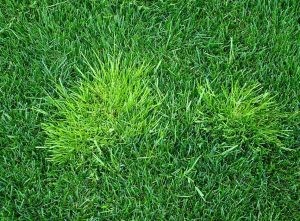
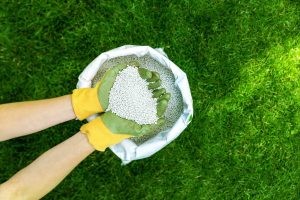
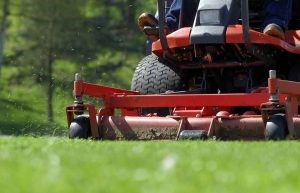


Comments